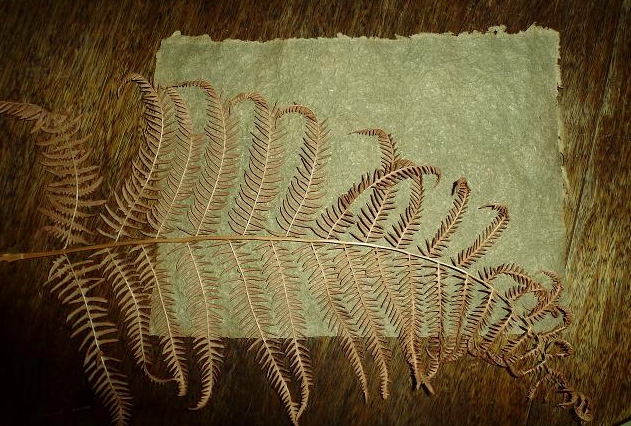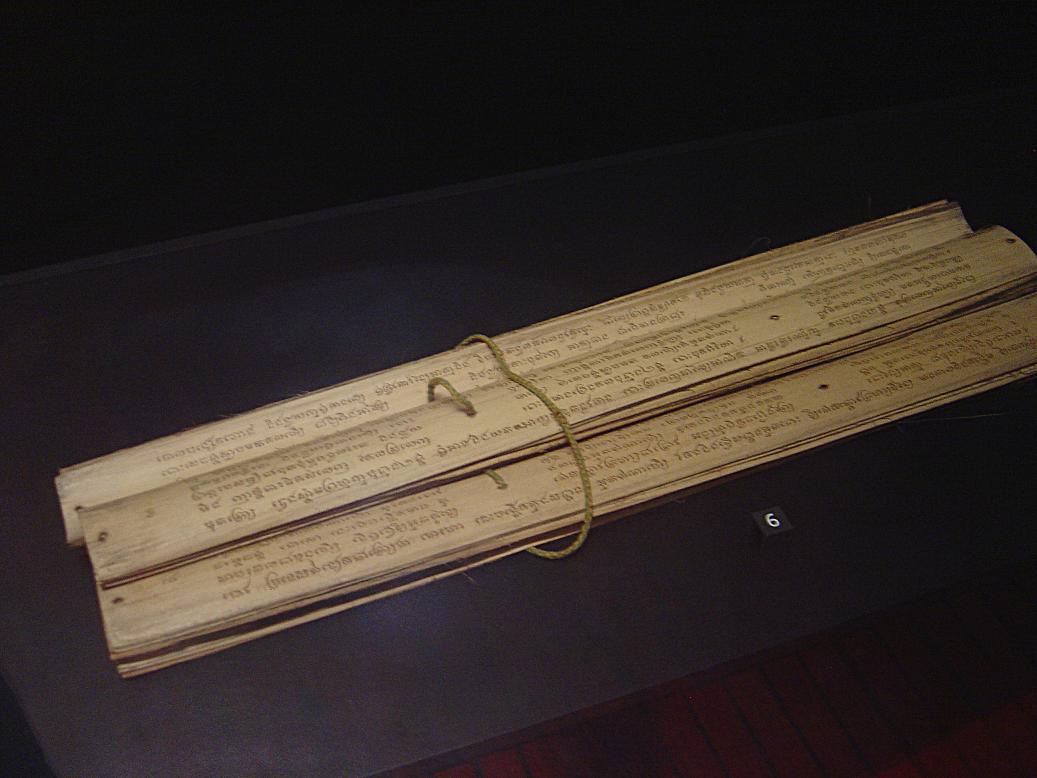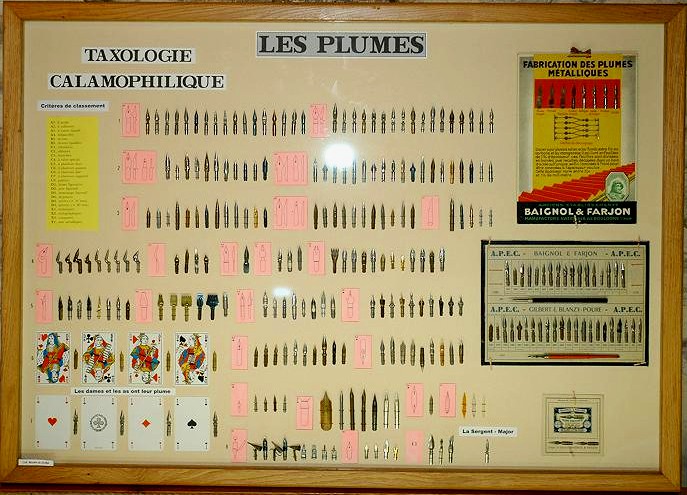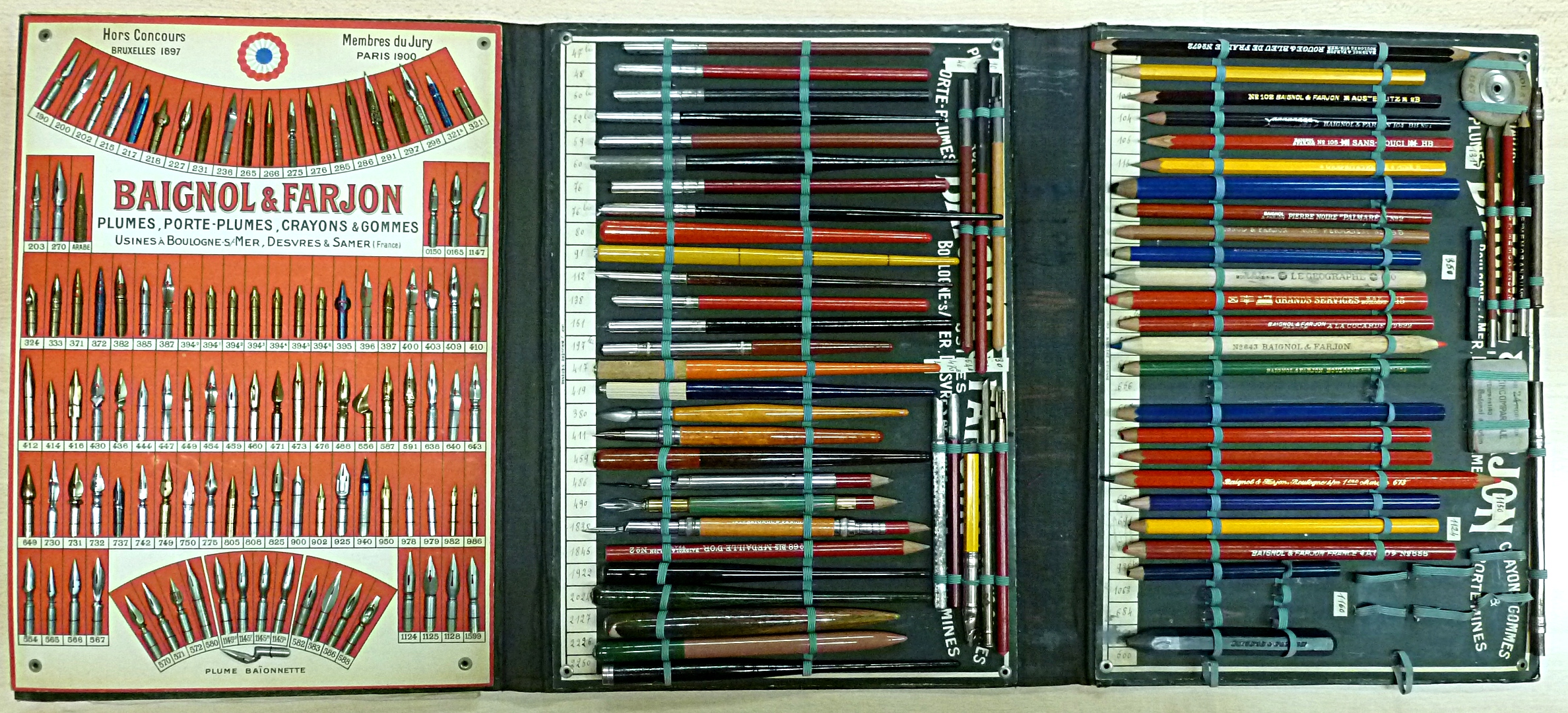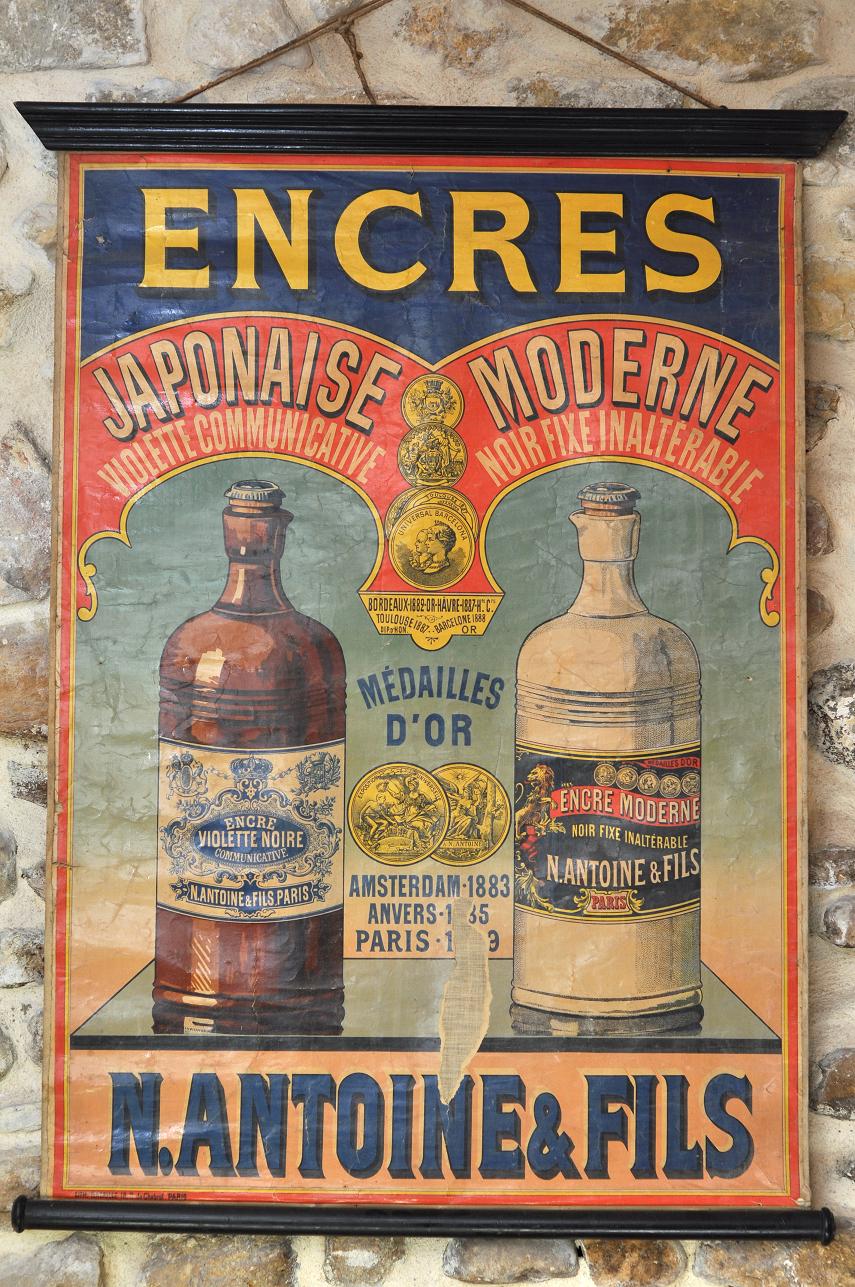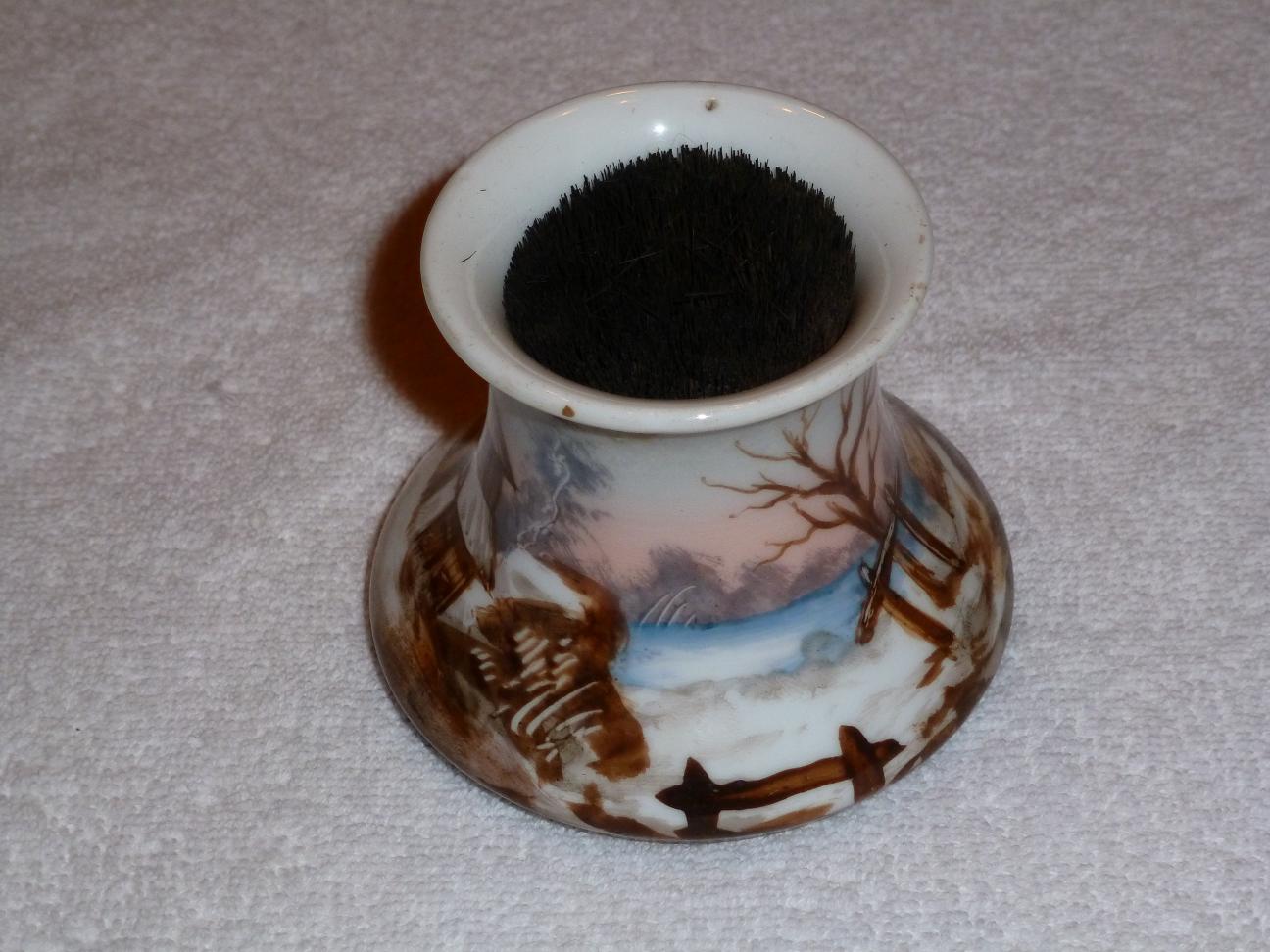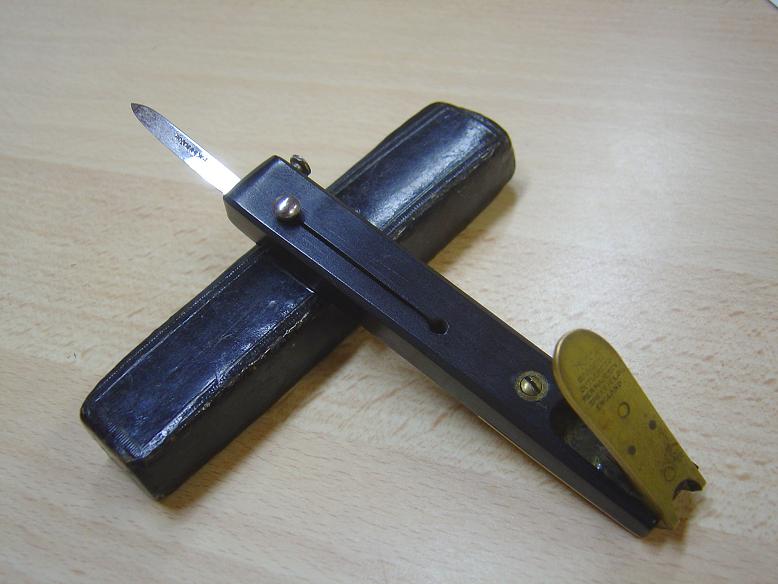
UPDATE OF THE PAGE april 6, 2024
Exhibits
|
This museum is the result of the work of a collector, Jean-Louis Bonnefille, retired teacher. During 55 years he has gathered thousands of objects linked to the art of writing. He created the museum of writing in 1992 to share his passion with the wider public. |
 |
Writing Equipment
|
The first 2 rooms present writing equipment, their manufacture, their use from prehistoric clay tablets to recycled paper via papyrus,parchment and all various sorts of paper. |
paper made from fern leaves |
A lacquered metal plate with Buddhist text written in the sacred language of Asia |
Pages of a work made from palm leaves |
Inkwells
|
The big room of inkwells will inspire visitors who will find there unique examples that come from all horizons and origins. |
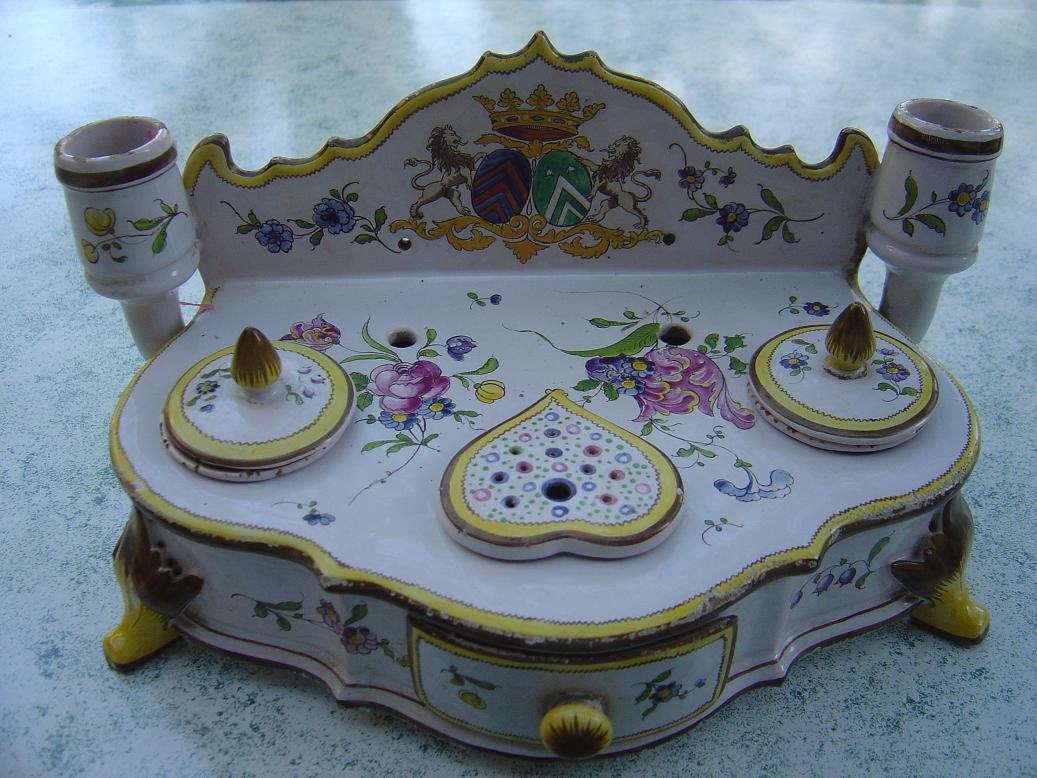 |
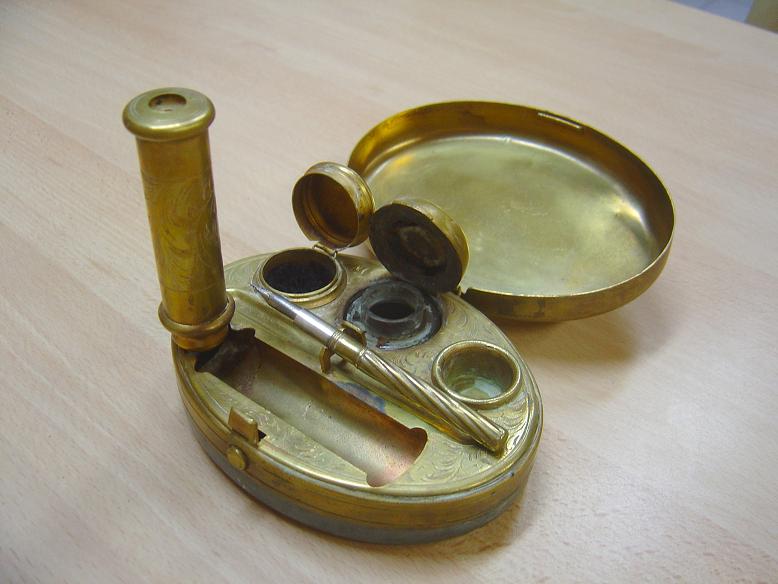 |
Nibs
|
One room is devoted to nibs, boxes and nib holders. The museum owns more than 7000 nibs. Most of them are exhibited. |
Image of calamophilia taxology to facilitate the classification and exchange of feathers. |
Necessity of a sales representative from Baignol and Farjon on 1920
|
Inks
|
The manufacturing is very diversified, very versified according to the natural pigments, plants and animal fats used. |
Affiche des encres en toile cirée Antoine 1898 |
Postercardboardinks Gardot Dijon 1910
|
Implémente
Around 2000 BC, the stylus lost its place in favor of the "calame", the tool that is used until today for western and arabic calligraphy. around the year 600 CE ,the feather appeared only to be abandoned around the 1880s when the metal feather flooded the market. Many other objects related to writing were created to satisfy practical needs such as penknives, blotting paper, powder to dry ink, a small brush to gather powder, travel kits, a travel inkwell.
Salle de classe
The tour concludes with a complete reconstruction of a 1920s classroum and you are welcome to try the material found in the museum.
|
Wipe the nineteenth porcelain feathers |
Ebony cut feather XVIII° |












